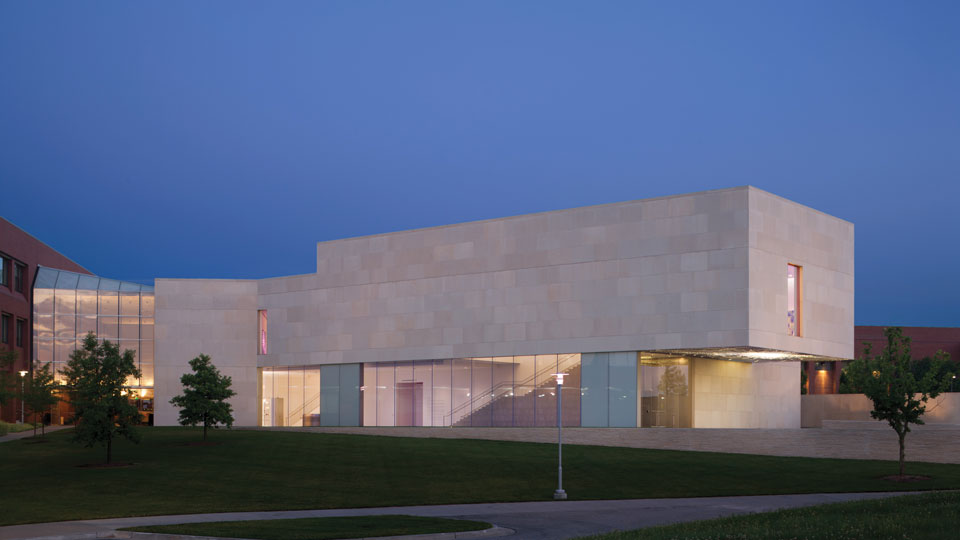Ken Price
Ken Price’s ceramic sculptures have long been known to ride the cusp between biomorphic and geologic form. In his recent sculptures, he brings his objects into the realm of intense sensuality, serving them up as vehicles for his startling use of lush color. His sensuous forms display an exuberant wit which is reminiscent of surrealism and reflects Price’s love and enthusiasm for modern jazz.
Price’s alternating use of organic shapes and precise geometric forms often join to create shifting planes and elusive black voids which explore the relationship between space and volume. Simultaneously amusing and disturbing, Price’s sculptures allow viewers to get caught up in a fantasy of seductive forms, while also demanding an acceptance of the empty space he probes.
Molded by hand and fired slowly, the works are afterwards painted with layers of acrylic that are chemically treated and then sanded to achieve their luscious patinas. The sanding creates weathered-looking color contours, emphasizing the curvaceous folds and nodules of the organic, terrestrial forms. The works' dense color combinations further enhance the glow of their smoothly textured skins. With their undulating forms and polychromatic surfaces, Price’s sculptures are charged with an undercurrent of eroticism. Price has said, “Modernism was a puritanical movement that banished many forms of sensuality and pleasure, but I’ve never understood that kind of thinking – I mean, what’s the point of life?”
Born in 1935, Ken Price earned a BFA from the University of Southern California and his MFA from the New York State College of Ceramics at Alfred University in 1959. In his 40-year career, his work has been included in numerous museum exhibitions, including a retrospective in 1992 organized by Menil Foundation, Houston, that traveled to the Walker Art Center, Minneapolis. Price’s work is included in the permanent collection of the Los Angeles County Museum of Art; Museum of Modern Art and Whitney Museum of American Art, New York; Hirschhorn Museum, Washington, D.C.; Nelson-Atkins Museum of Art, Kansas City, Missouri; Victoria and Albert Museum, London; Stedlijk Museum, Amsterdam; and many others.
The gallery guide includes an essay, “Ken Price's User-Friendly Modernism: Mutant Handsome Things. Matter-of-Fact Mysteries,” by Michael Duncan, Los Angeles, corresponding editor for Art in America.
For their generous assistance, we are deeply grateful to Stanley Baumblatt, Joan and Don Beall, The Edward R. Broida Trust, Michael Duncan, Alan E. and Ellen Cober, Kimberly Davis, Dotty and Bud Gerson, Tim and Pam Hill, Franklin Parrasch, Ken Price, Ruth Rattner, and Ross and Paula Turk.





